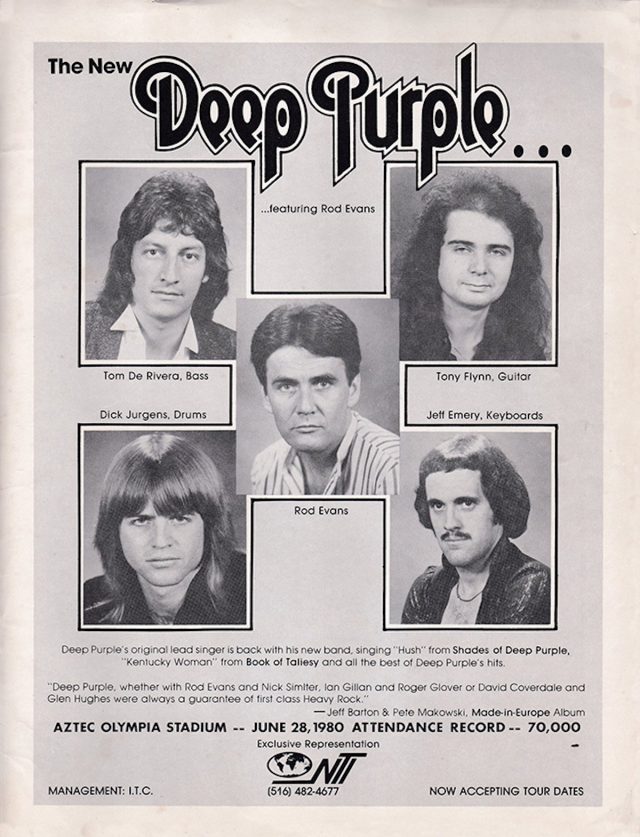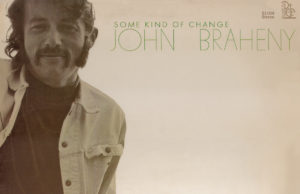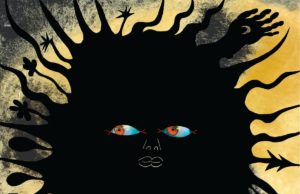 During the first eight years, Deep Purple’s lead vocalist and bass player positions were hot seats — six people held the roles during that time in band lineups referred to as Mark I, Mark II, Mark III and Mark IV. The band called it a day in 1976, before reforming the successful Smoke On The Water-era Mark II lineup for the comeback album Perfect Strangers. I believe we are currently on Deep Purple Mark VIII.
During the first eight years, Deep Purple’s lead vocalist and bass player positions were hot seats — six people held the roles during that time in band lineups referred to as Mark I, Mark II, Mark III and Mark IV. The band called it a day in 1976, before reforming the successful Smoke On The Water-era Mark II lineup for the comeback album Perfect Strangers. I believe we are currently on Deep Purple Mark VIII.
But this is leaving out the most insane lineup of all — an uncounted brown asterisk in 1980 when the band’s original lead singer came out of retirement to lead a bunch of nobodies on a tour which spanned Hawaii to Anchorage. A tour which led to riots and somehow included shows in both Mexico City and Sudbury, Ont. How the hell do you pack for a tour like that? More than 40 shows in five months, first as Deep Purple and later as New Deep Purple.
That original lead vocalist was Rod Evans, who basically fell off the face of the Earth (musically speaking) when the embarrassing ordeal was over. He didn’t even show up to Deep Purple‘s Rock And Roll Hall of Fame induction in 2016, though he was invited. Those who claim to have his contact information guard it like a grail map. Original bass player Nick Simper was not invited or included in the induction, even though he was in the band at the same time as Evans. He may be one of rock’s most screwed-over musicians.
More accurately, Simper was there before Evans and had actually recommended Ian Gillan be approached as the band’s first frontman. Gillan turned the offer down and Evans was chosen after a long and thorough audition process. That first lineup (Mark I) of Evans, Simper, Ritchie Blackmore, Ian Paice and Jon Lord made three albums together between July 1968 and June 1969. Their classic songs included covers of Hush, Kentucky Woman, Help and River Deep – Mountain High and the instrumental Wring That Neck. All three records are bluesy, psychedelic and fantastic. But, something wasn’t right as far as Blackmore was concerned. As he did later when he formed Rainbow in 1975, he wanted the music to get heavier, more rock. Both Simper and Evans also had designs on emigrating to the States. Evans was enamoured with Emmaretta Sparks from the Broadway musical Hair. Purple’s last single before his departure was written about her.
Blackmore, Paice and Lord discussed it and decided Evans was too much of a pop vocalist and decided to again approach Gillan. This time Gillan agreed to join — but only on the condition he be allowed to bring along his bass player Roger Glover. It was agreed — and Glover was brought in to replace Simper, who had been the one to suggest Gillan in the first place.
As the band prepared to record their next single Hallelujah, Simper and Evans were deliberately given incorrect studio times so the band could record it with Gillan and Glover. When the doomed men showed up ready to record, they were told by studio staff that the track was already complete. Paice, Blackmore and Lord directed management to tell Evans and Simper they were out. The pair were given three months wages, some of the band’s gear and the choice of future royalties from the first three records, or a lump-sum payout.
I’m not sure what Simper chose, but Evans chose the royalties, moved off to the U.S. and got hitched. He put out a solo single — the coincidentally titled Hard To Be Without You — and started Captain Beyond with the remnants of Iron Butterfly (guitarist Larry “Rhino” Reinhardt and bass player Lee Dorman) and Johnny Winter’s drummer Bobby Caldwell.
Captain Beyond‘s self-titled debut album is a masterpiece of stoner rock. Incredible at times. They made a problematic followup called Sufficiently Breathless, with a slightly different lineup and producer. It’s not very good at all. And then Evans quit and buggered off to study rehabilitative medicine. We’ll come back to him in a second.
First, we’ll catch up with Simper. The bassman may not have written any songs about Hair cast members, but he got involved in the backing band for one: Marsha Hunt. I believe they called themselves White Trash. This was fairly brief, because Hunt (whom Brown Sugar may be written about) got pregnant with Mick Jagger’s kid and had to quit the band. So, Simper rejigged the lineup and renamed it Warhorse — in the very beginning, Rick Wakeman was a member, until he bailed for The Strawbs. Warhorse’s self-titled proggy debut came out in 1970. It’s mostly awful and long-winded, but the track Burning is AWESOME. The band essentially ran out of money after their second album, Red Sea, and Simper just plays for fun these days. He never got himself in trouble like Evans did.
In 1979 both men were approached by entrepreneur/lawyer/keyboardist Geoff Emery, who had been playing with a watered-down faction of Steppenwolf and saw a burgeoning market in reviving defunct bands. This became a sticky situation and Emery eventually wound up calling the band “New Steppenwolf” before a lawsuit by vocalist John Kay shut it all down. For his second trick, Emery decided to put together a new version of Deep Purple, who had split three years earlier. Simper said no, but Evans agreed and left his job in the medical field for another chance at being a rock star.
So he, Emery and a bunch of other guys from “New Steppenwolf” I’ve never heard of, rehearsed a baffling set of songs from both Evans’ Mark I era, but also songs from Mark II (Gillan) and III (David Coverdale and Glenn Hughes). Songs in the setlist included Hush, Hey Joe and Mandrake Root from the first album Shades Of; Wring That Neck from the second album Book Of Taliesyn; Highway Star, Smoke On The Water and Space Truckin’ from Machine Head; Woman From Tokyo from Who Do We Think We Are!; as well as Burn and Might Just Take Your Life from Burn.
Emery was banking on fans eating it up and the former band members being uninterested, given that they had all pretty much gone on to other bands — Whitesnake, Gillan and Rainbow. He was wrong on both accounts. The band were so awful that crowds rioted.
Their tour, which included TWO shows in Anchorage, a riotous one in Quebec City and elite venues in Rouyn-Noranda, Sudbury, Edmundston, N.B. and Bronte Creek Provincial Park in Oakville, Ont., started in May 1980. By August, the former members of Deep Purple were actively trying to derail it all. Ads were posted in newspapers where New Deep Purple were playing, stating things like ‘the following musicians will not be performing at tonight’s Deep Purple show: Ritchie Blackmore, Ian Gillan, Ian Paice, Jon Lord and Roger Glover.’ Cringe. Even worse, the band tried to do a full light and smoke show. The glitter-suited drummer Dick Jurgens (not to be confused with the 1940s swing bandleader) had a shtik where he would attack the organ with a chainsaw. Jurgens was often photographed with a Poulan chainsaw.
Eventually, Blackmore and managers Tony Edwards, John Coletta and Bruce Payne sued Evans and won both $672,000 in damages and a permanent injunction against Evans and his cohorts using the name Deep Purple. Evans couldn’t come up with the funds, and so gave up his royalties claims from the first three albums.
He left showbiz for good and has been doing insurance litigation focusing on fraudulent medical claims ever since. Here he is:
But few know where he lives or how to reach him. Paice apparently does and so does Reinhardt, who unsuccessfully tried to get Evans involved in a Captain Beyond reunion several years ago.
No matter what we get out of this — I know, I know we’ll never forget.
• • •
Area Resident is an Ottawa-based journalist, recording artist, music collector and re-seller. Hear (and buy) his music on Bandcamp, email him HERE, follow him on Instagram and check him out on Discogs.









































